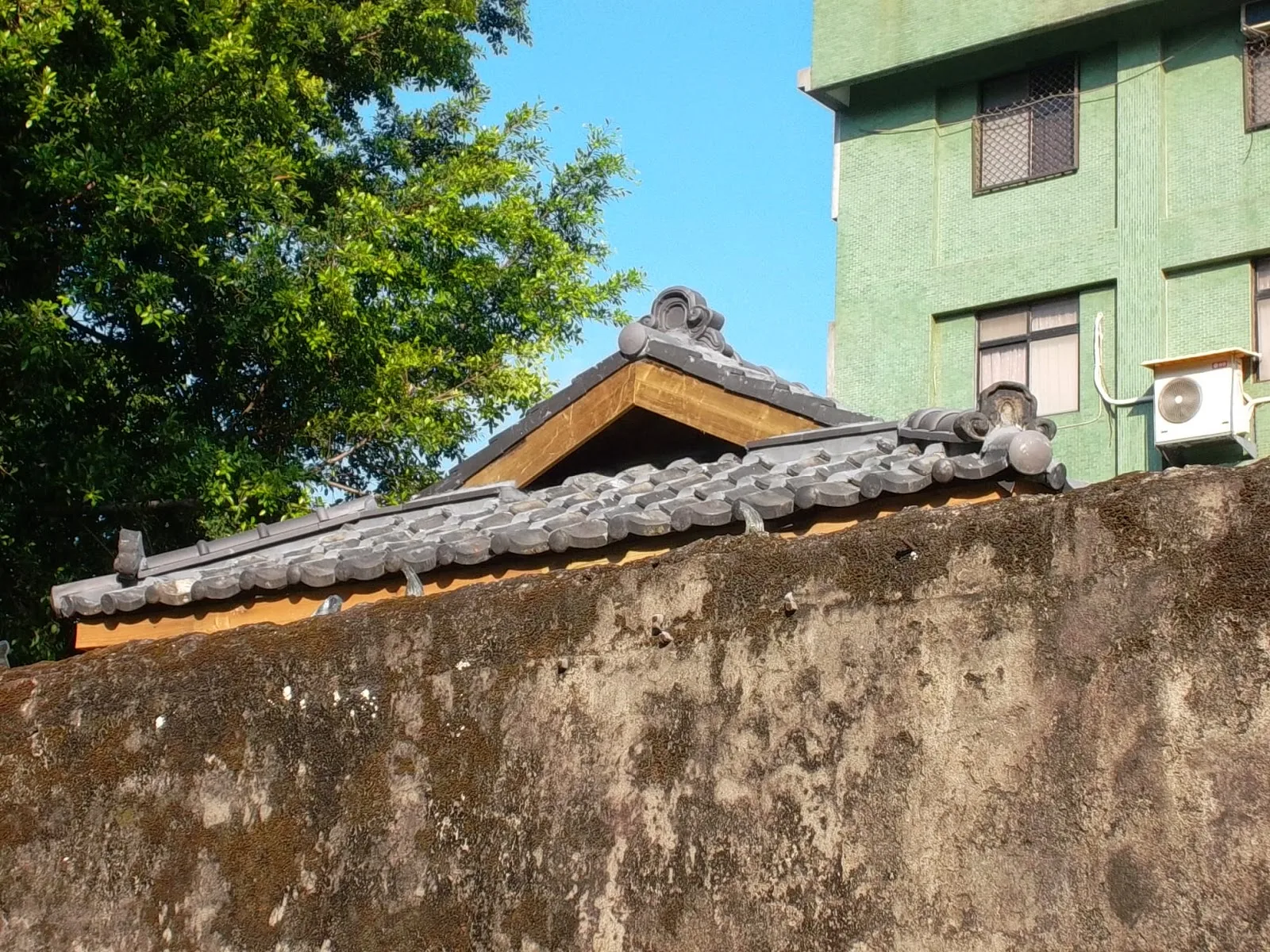A while ago I wrote a short post about an old house in Taipei's Roosevelt Road which I'd been often passing by, wondering if it was a building from the Qing Dynasty or from the Japanese era. I thought there weren't many such old houses left in that area, but, while taking long walks around Gongguan, Taipower Building Station, Guting and Chiang Kai-shek Memorial Hall, I found out that I was wrong. In fact, there are several of them, scattered all around this part of Taipei City. However, they are not very visible, and if you don't look carefully, chances are you won't even notice them. There are three reasons for this. First, they usually stand isolated among modern buildings, sometimes sandwiched between or hidden behind them. Second, they are usually surrounded by high walls. Third, they tend to be so decrepit and neglected that they lose much of their charm.
Just a few days ago, I found a house that might be from the Japanese era. It is so far one of the best preserved I've seen, and apparently the building is being renovated, so we may hope that it won't be torn down for the sake of some new high-rise apartment block, of which Taipei has already more than enough.
This house is in a much better shape than most other old ones I usually see in Taipei. Most of them have been much less fortunate, as the two examples below show:
I am always surprised by the lack of interest for these old houses among the population. Moreover, no one seems to think about integrating them in the urban landscape, using them for museums, exhibitions, or for other purposes. In another post I will talk about a coffee shop in an old Japanese building, and I will show that this type of constructions can actually be used and have some advantages compared to new ones, especially the unique atmosphere.
As you can see, a wall isolates the house from the rest of the city, probably for safety concerns. I wonder why in Taiwan, which is a very safe country, these old houses are protected as if they were military garrisons. By way of comparison:
| Street in Dahlem, Berlin (source: Wikipedia) |












Comments
Post a Comment